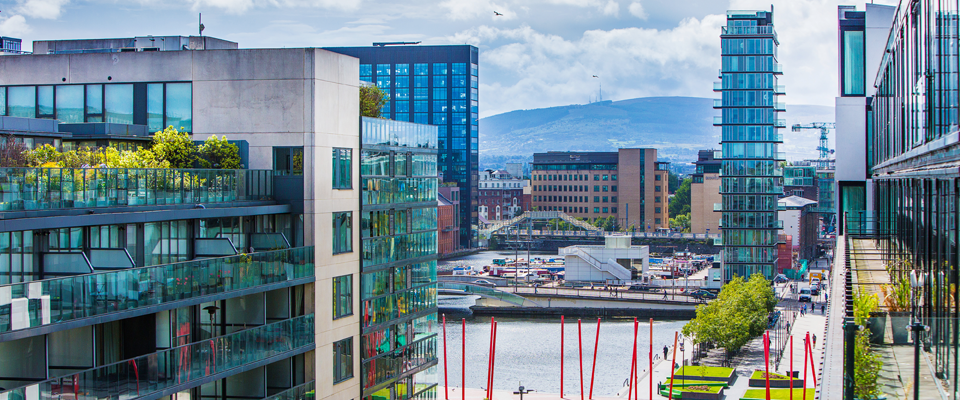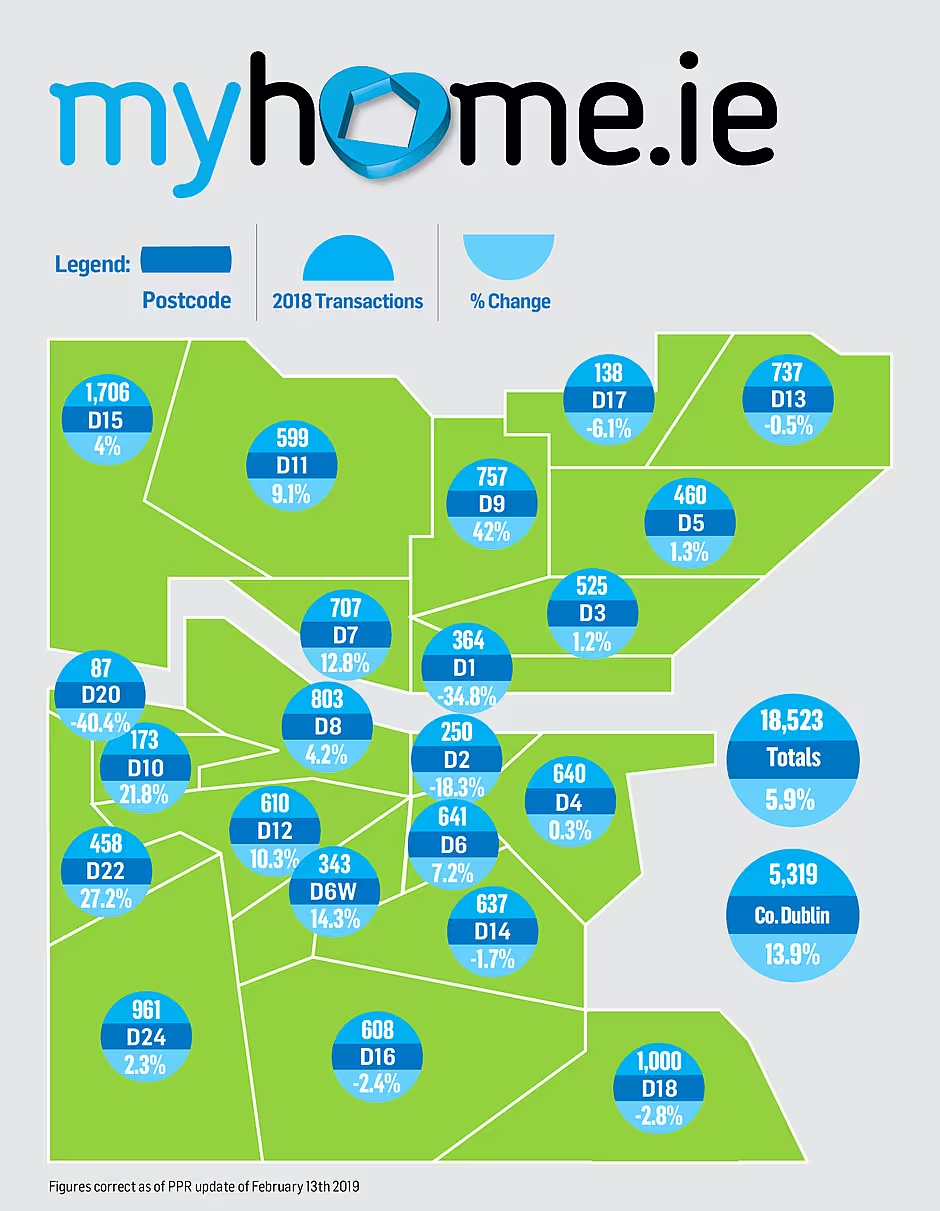A new study of the Dublin property market shows that the number of house sales rose from 17,491 in 2017 to 18,523 last year, an increase of 5.9%.
The total value of transactions for the year was also up, rising by 17.7% to €8.7 billion.
According to the research, which was carried out by MyHome.ie based on an analysis of the Property Price Register, the number of house sales rose in fourteen of Dublin’s 22 postcodes, while it fell in eight. Sales also rose in County Dublin.
For the second year in a row, Dublin 15 was the postal district with the largest number of sales during the year - 1,706, followed by Dublin 18 on 1,000 with Dublin 24 in third place on 961. These are the postcodes which are seeing a lot of new developments such as Hansfield in Clonsilla and Royal Canal Park in Ashtown, Dublin 15, Clay Farm in Leopardstown, Dublin 18 and Elder Heath in Tallaght, Dublin 24.
The post codes which recorded the biggest increases were Dublin 9 up 42%, Dublin 22 up 27% and Dublin 10 up 22%. One of the main reasons for the increase in Dublin 9 was the sale of 75 apartments in Northwood Green in Santry and the sale of 65 units in the Grace Park Wood development in Drumcondra.
The value of sales in Dublin 8 increased by over 122% due in the main to the sale of two large developments on Clancy Quay.
At the other end of the scale, the post codes which recorded the biggest fall in the number of sales were Dublin 20 (-40%), Dublin 1 (-35%), and Dublin 2 (-18%). The falls can be attributed to the sale of a number of large developments in these areas in 2017.
Angela Keegan, Managing Director of MyHome.ie said the figures reflected a number of important trends.
“This is the third year in a row that Dublin 15 has had the highest number of sales and the second year in a row that Dublin 18 and 24 have occupied second and third place respectively. In light of current supply shortages, it is positive to see new developments coming to the market.
”However, the downside is that the city is sprawling out beyond the M50 at an alarming rate and that raises a host of questions around public transportation policy, commute times and the kind of city we want to live in.
“We believe we need to look at building higher in certain parts of the city and to providing incentives to build in other towns and cities which haven’t benefited from the economic recovery.
“Dublin is also important because it accounts for roughly a third of the Irish property market. While the number of sales is continuing to increase – by almost 6% - the rate of increase is slowing. In 2017 the number of sales fell in just four postcodes. Last year this figure was eight. Against that the value of sales is up by almost 18%, with the rising number of new developments contributing to the increase.Currently there are 493 new development schemes listed on the MyHome website.
“It’s also interesting to see the areas which have seen the biggest increases. In Dublin 9 its areas like Santry, Ballymun, Beaumont and Drumcondra which are driving sales, in Dublin 22 its Clondalkin and Liffey Valley while in Dublin 10 its Ballyfermot and Cherry Orchard. While these areas might not always have been in demand, their location and proximity to the city are making them increasingly attractive.”
Most activity in Dublin 15 centred around Clonsilla (434), Castleknock (350) Blanchardstown (140) and Ashtown (113). Overall sales were up a modest 4% on 2017. In Dublin 18 where sales actually declined 2.8%, Leopardstown (180), Stepaside (119) and Foxrock (113) were the main focal points. Ballymun led the way in Dublin 10 with 135 sales.
Dublin 20 recorded the biggest decrease in the number of sales - 40% - and the lowest number of sales of any postcode – 87.
Sales in County Dublin rose from 4,669, to 5,319 an increase of 14%. Lucan in west Dublin led the way on 681 sales, followed by Swords on 579 and Dun Laoghaire on 544.








